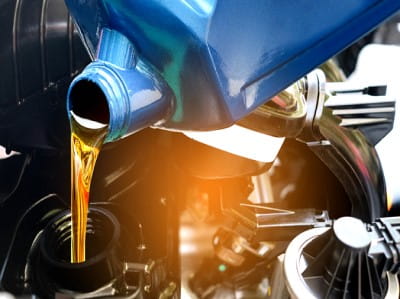Jenifer Moore
Public Affairs Specialist, OH
O: (513) 762-3105 ext. (5503105)
C: (513) 401-4911
jmoore1@aaa-alliedgroup.com
CINCINNATI, Oh. (August 26, 2020) –– As the 2020-2021 school year begins, uncertainty and unknowns loom as school districts plan for a return amidst a pandemic. Whether students return to full-time in-person learning or a hybrid of remote and classroom instruction, transportation will undoubtedly be impacted, affecting not only school districts, students, and parents but other motorists on the roads.
AAA and local traffic safety partners including the Hamilton County Safe Communities Coalition and Tri-State Trails advises all drivers to prepare for possible changes in and around school zones:
- Staggered schedules and social distancing could mean more school buses on the roads to transport students.
- Many parents may opt to transport their children to and from school, avoiding the school bus ride but increasing the volume of vehicles during drop-off and pickup.
- More students may take to walking or biking to school, increasing foot and bike traffic close to schools.
“While the return to school and our roads will look different this year, our responsibility for keeping students safe hasn’t changed,” says Jenifer Moore, AAA spokeswoman. “For everyone’s sake, especially our young students, be alert for changing traffic patterns, slow down, and don’t drive distracted.”
AAA offers the following tips as schools begin to reopen:
AAA Drop-Off/Pick-Up Safety Tips
- Follow school drop-off and pick-up procedures.
- Don’t double park, it blocks visibility for other children and vehicles.
- Don’t load or unload children across the street from the school.
- Have children exit the vehicle on the “curb side” every time (so they aren’t opening the car door into an oncoming traffic lane or crossing around the front/back of car to get to curb)
- Slow down, eliminate distractions, and watch for children.
AAA School Bus Safety Tips
- Always Stop for School Buses – Flashing yellow lights on a school bus indicate it is preparing to stop to load or unload children and motorists should slow down and prepare to stop. Red flashing lights and extended stop arms indicate the bus has stopped and children are getting on and off. Motorists are required to stop their vehicles and wait until the red lights stop flashing, the extended stop sign is withdrawn and the bus begins moving before they can start driving again.
- Keep Track of Time – Be aware of the time of day you’re on the road and how that coincides with the school day. More school-age pedestrians are killed from 7 to 8 a.m. and from 3 to 4 p.m. than any other hours of the day.
- Slow Down – Whether in a school zone or residential neighborhood, drivers should keep their speed low and be prepared to stop quickly for increased vehicle or pedestrian traffic.
- Come to a complete stop -- Always come to a complete stop, checking carefully for children on sidewalks and in crosswalks before proceeding.
- Eliminate distractionsResearch shows that taking your eyes off the road for just two seconds doubles your chances of crashing. Children can be quick, crossing the road unexpectedly or emerging suddenly between two parked cars. Reduce risk by not using your cell phone while driving.
- Obey Traffic Signs – Unfortunately, many motorists violate stop signs in school zones and residential neighborhoods –many failing to come to a complete stop, rolling through a stop sign or not slowing down at all.
AAA Pedestrian Safety Tips
- Cross only at corners so drivers can see you. Never cross between parked cars or mid-block.
- Use a crosswalk when it’s available. Don’t assume that because you can see the driver, the driver can see you. Always use caution when crossing.
- Look all ways before crossing. Look and listen for cars, pedestrians and bicyclists.
- Cross right when the light turns green so you have time to cross safely.
- Use the crosswalk push-button signal when possible, and cross when the signal allows.
- Watch for cars that are turning left or right when you are crossing.
- Walk on a sidewalk when it is provided. If you must walk in the street, walk facing traffic, on the left side of the road and as far to the left as possible.
- Make it easy for drivers to see you – dress in light colors, wear reflective material or use a flashlight.
- Remove headphones and don’t use cell phones or electronic devices when crossing the street.
- Watch for white lights on vehicles signaling backing up in driveways or parking lots.
- Avoid walking alone. Walk with a friend.
AAA Bicycle Safety Tips
- Make sure your child has the skills to ride a bike safely, such as riding in a straight line and signaling to vehicles when turning.
- Choose the safest route to bike to school, one with less traffic and slower speeds. Use bike paths if they are available.
- Make sure your cyclists understand traffic safety rules, such as riding in the same direction as traffic and stopping at all stop signs and signals.
- Explain the importance of wearing a bike helmet to your child. They’re critical to minimizing injury in case of a crash. According to the Insurance Institute of Highway Safety, wearing a helmet can reduce the odds of head injury by half.
- Ride focused and alert. Never use earbuds or electronics while riding.
- Tri-State Trails has a comprehensive map of trails and on-road bike lanes that parents can use to choose a route. tristatetrails.org/find-a-trail.
- Use bike lights if you are riding when it is still dark out early in the morning. Use a flashing white light in front and a flashing red light in the rear.
- Bring a lock so you can secure your bike when you arrive at school.
“No matter the plan, no matter the mode of transportation, everyone needs to remain vigilant – put down the phone, look up, and pay attention to help local students get to and from school safely,” says Moore.
AAA provides automotive, travel, and insurance services to 60 million members nationwide and nearly two and a half million members in Ohio. AAA advocates for the safety and mobility of its members and has been committed to outstanding road service for more than 100 years. AAA is a non-stck, non-profit corporation working on behalf of motorists, who can now map a route, find local gas prices, discover discounts, book a hotel, and track their roadside assistance service with the AAA Mobile app (AAA.com/mobile) for iPhone, iPad and Android. For more information, visit www.AAA.com.
###







